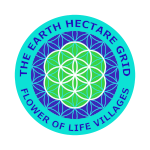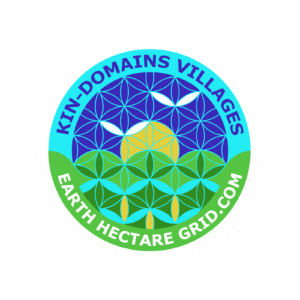KIN-DOMAINS
VILLAGES
HECTARES VILLAGE
SURFACE SIZES
ONE SIZE FITS ALL
A FEW GUIDELINES
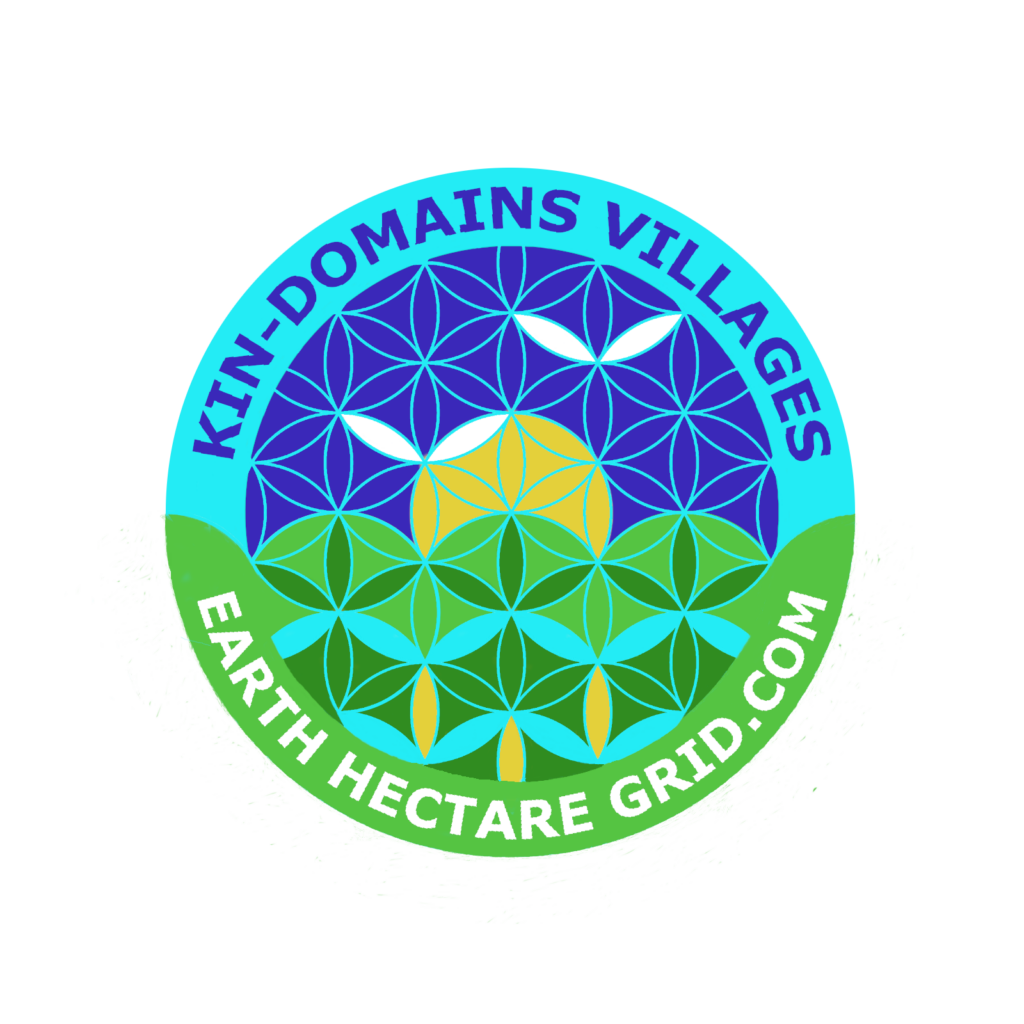
A New Type Of Village:
KIN-DOMAINS VILLAGE
What Is A Kin-Domains Village?
A Kin-Domains Village is a village with Kin-Domains on which families live and their subsequent generations. The idea of Kin-Domains originates from the Anastasia Bookseries. As already shared in the introduction on the homepage, a Kin-Domain is a homestead with the size of a hectare, which is two and a half acres!
Kin or Family?
The words ‘Family’ and ‘Kin’ both refer to family. That’s why a Kin-Domain is also called ‘Family-Domain’.
In many European languages, the word ‘Family’ has many derivatives. Not so much for the word ‘Kin’. That’s why on this site both terms are used.
For instance, in Dutch language there is more of a differentiation between the two. A ‘family’ can either consist of mum & dad and kids (like the Dutch words ‘familie’ or ‘gezin’), but to a larger extend also refer to grandparents and ancestors, and uncles and aunts, cousins, nieces and nephews.
Domain, Estate, Homeground
The Dutch word ‘verwanten’ is the translation for ‘kin’, but only as the broader family ring, such as uncles and aunts, cousins and nephews.
Other terms that are known internationally are ‘Family home ground’ or ‘Family estate’ or ‘Family birthground’. A village or settlement that consists of kin-domains is also called as such!
On a Kin-Domain live the previous- and next generations of the family. Those are your ancestors or your descendans who will inherit the Kin-Domain in the future.
FREE TO LIVE
Who can set up a Family Domain?
The family can consist of one or more family members with the intent to create a Family Domain on the hectare plot.
There are a few guidelines where one has to adhere to. These are recorded in the Anastasia series. A derivative of this can be found on the page GroundLaw
No taxes are levied on the Family Domains, neither rent, nor mortgage, nor lease. Does this sound like a mirage to you? Just as a reminder, we’re born free.

LIVING FREELY ON THE LAND
It’s our birthright to live and thrive on Earth, thus we need to share all resources equally. Right, so do we?
Yes we’ll be living freely on the land.
This is because the world belongs to all of us. Of course there is a lot of work to be done, for all of us. But nobody needs to pay someone else money in order to be able to live.
Green ‘Living’ Fence
Around every hectare is a fence of ‘living greenery’. Its kinda mandatory! It must thus consist of trees. In a lower layer of greenery, shrubs and bushes can be placed.
The idea of the Hectare ‘Grid’ is actually based on these green living fences, which will form an outline around the hectare parcels. So now you know the Earth Hectare Grid is green!
A Quart Hectare Forest
Another given is that a quarter of every hectare must be covered with everlasting forests.
This is an area of about 28 square yards.

About a quarter of a hectare of woodland.

A summer forest with several deciduous trees.
CREATE YOUR OWN FOREST
Such forested area consists of deciduous trees, conifers and food-producing trees and shrubs (fruit, berries, nuts). You can know for yourself how the fence and the forest are composed. See the page ‘TREES’ for further inspiration!
Combining Woodland
If the managers of neighbouring hectares decide to combine their land, for instance their quart hectare forest, the surface size of those small forests will increase to 3/4 of a hectare, or even a whole hectare of forest!
Fen, Pond or Lake?
Every hectare plot of land also has to contain one or more small bodies of water, such as a few fens or a small pond.
Small Pond
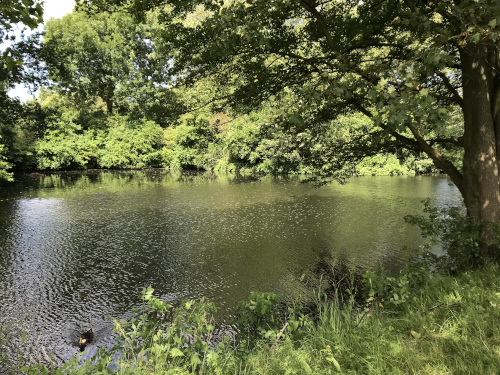
The advantage to have a small body of water in the forested area is for wildlife as well. Birds will also thrive from a water rich habitat. In summer episodes of drought, the trees will have suffient water.
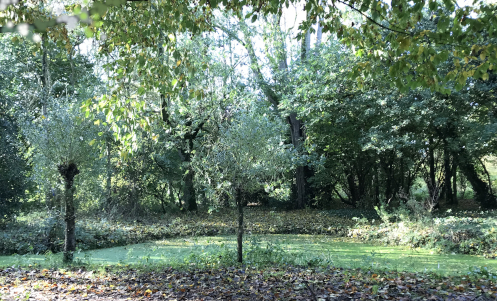
A tiny fen in the woods
Even after long summer drought, the surrounding trees still have water.
A Small Lake?
What can be done for the quart hectare forest, to combine them with neighbouring forests, can also be created with water-bodies. When three or four ponds are combined, it might even result in a small lake! Wouldn’t it be wonderful to go for a swim on your own territory?
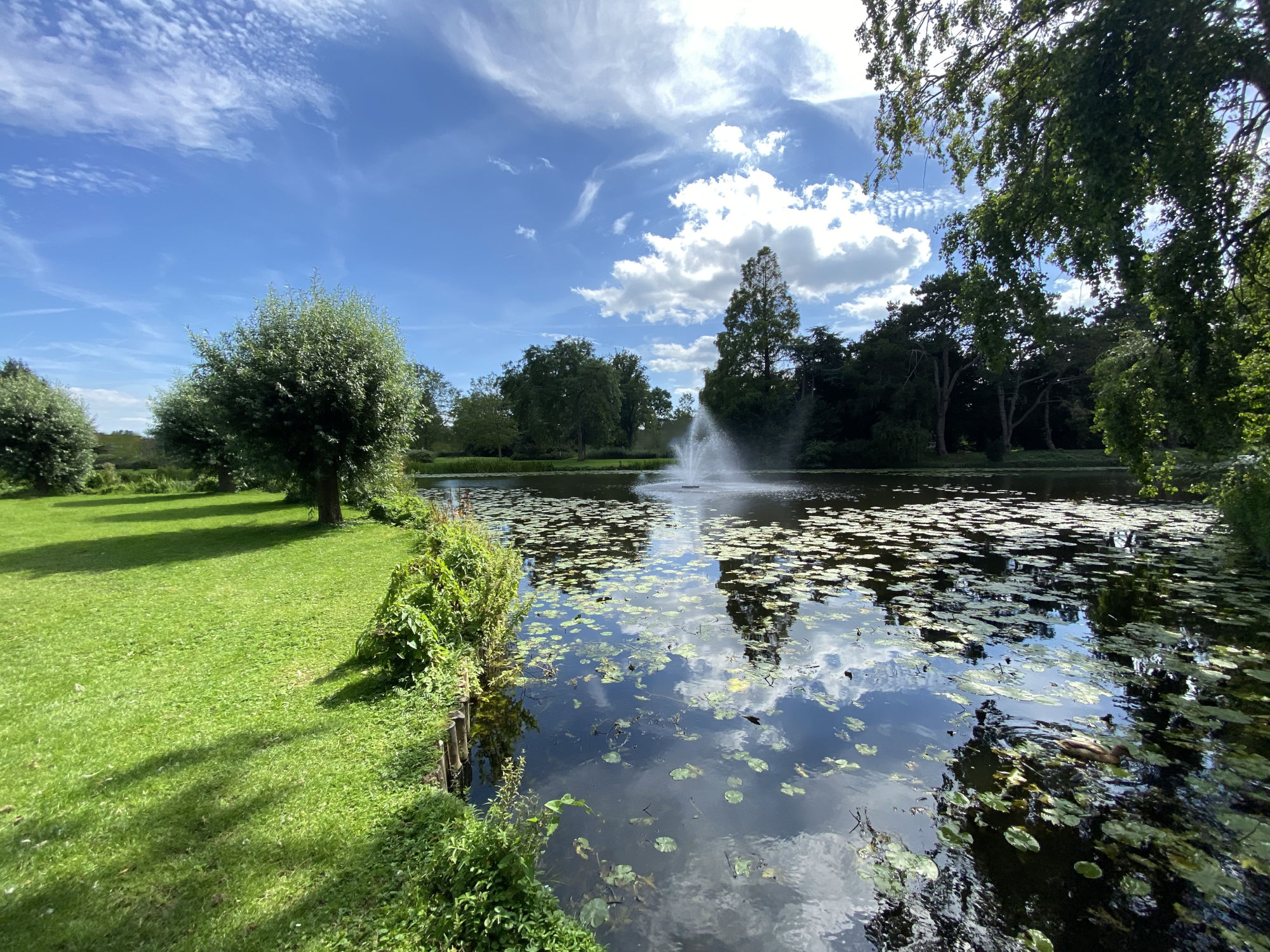
Tiny Pond
But even a tiny pond creates a vivacious atmosphere in the area!
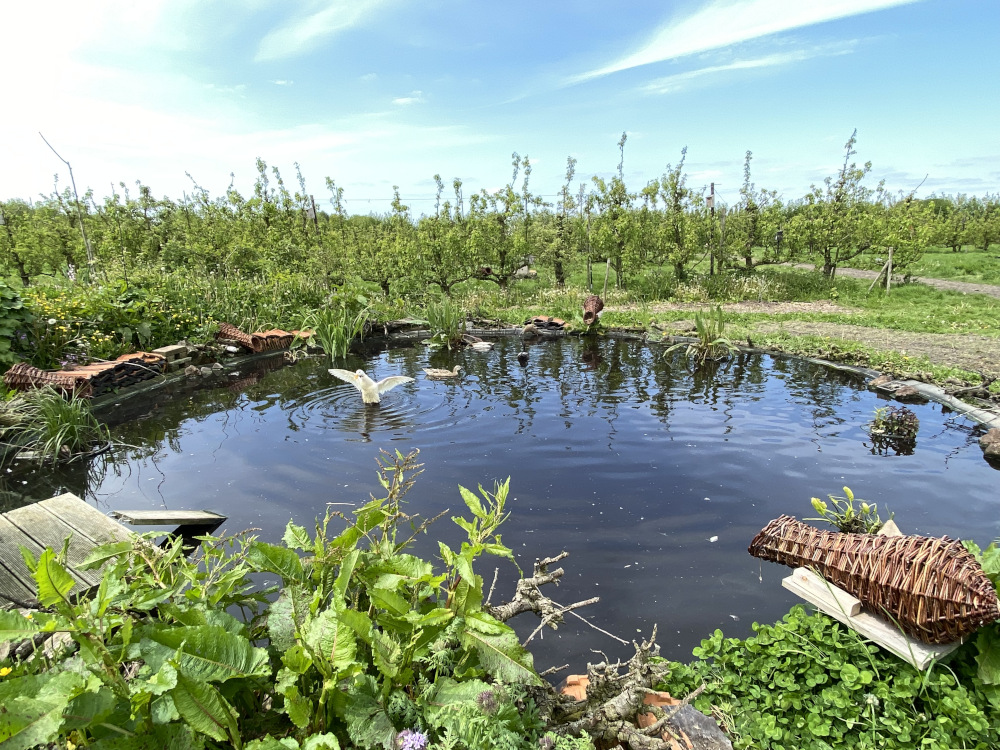
A FEW GUIDELINES
The World Belongs To All Of Us
What About A Green Plan?
According to the Anastasia bookseries, it appears in practise that people who have been allocated one hectare of land, first of all start planting an average of around 200 trees per family.
In addition, about 50 Fruit trees. Bushes, shrubs and berry bushes: an average of 2000 per family.
Housing and any outbuildings also belong to the lay-out of the kin-domain. Small-scale livestock farming is allowed.
With the help of A MAP one can ponder on, and design the lay-out of the hectare in advance. One may ponder for instance where one is going to plant those trees and shrubs?

YOUR COSMIC CONNECTION
What, Where and When?
But wait, how wide are the tree crowns and tree trunks when they are fully grown? So how much distance needs to be between them? And where will the house be situated, and does the lay-out also include business premises?
At the same time we can also ponder about the village we want to live in. Below is a design especially for the Earth Hectare Grid. It is based on a similar design from the Dutch Lex Veelo. This has been further developed by the Dutch Margreet Wilschut Otto.
SURFACE SIZES
Surface Sizes of Kin-Domains, the Hectares Village and Roads.
The plots allocated for kin-domains are at least 1 hectare in size. One hectare is 2.47 acres. Taking into account ground relief and other factors of the terrain, the size can be up to 1.3 hectares = 3.2 acres.
The village may consist of a maximum size of 150 hectares which is 370 acres. It has a village center for general activities. This center may occupy a maximum of 7% of the total village plot.
So in a village of 100 hectares = 347 acres, the village center consists of an area of 7 hectares = 17 acres. At 150 hectares it is 10½ hectares = 26 acres.
The image on the right (below for mobile phone) shows an abstract map of a design for a Kin-Domains Village of 127 hectares.
The Family Domains in this design are colored yellow and all have the shape of a hexagon, which has six equal sides. The center of the village contains 7 center-hectares, these are colored white.
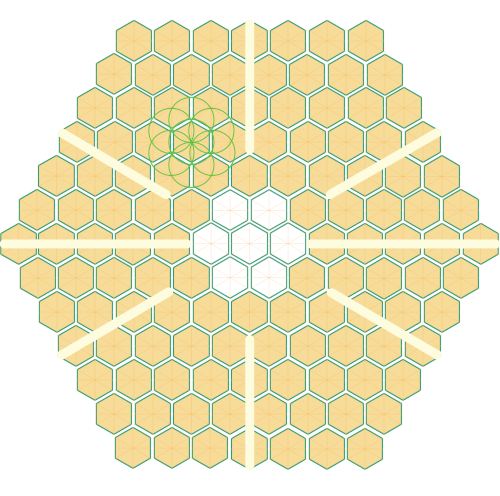
MAP OF FLOWER OF LIFE VILLAGE
Roads and passages have been created between all the hectare-parcels. These must be at least 3 to 4 meters wide for the Metric system, and 3.2 yards wide to 4.3 yards wide for the Emperial.
The green outlines around the hexagonally shaped hectares represent the green living fences of trees and shrubs.
The star shaped broad yellow lines are the main roads towards the center for visitors and guests, and inwards the village for destination traffic.
ONE SIZE FITS ALL
The Earth Hectare Grid’s Uniform Hectare Size
One of the default designs of the Earth Hectare Grid for a Village of Kin Domains is to create the hectares in a hexagonal shape.
For that purpose the hectare size needs to be slightly larger. This is because the hectare-hexagon’s dimensions then have the crucial numbers rounded in order to work more easy with it.
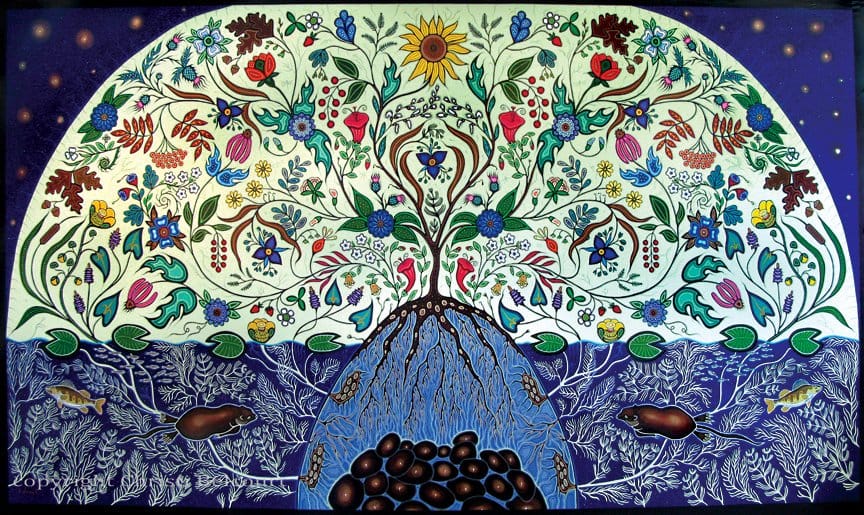
SEEDS OF LIFE
A FEW GUIDELINES
If not rounded, one would have to work with inches and centimeters after the decimal point on the ground in the real size of a hectare.
And it wouldn’t be for one measure only, but would lead to more divergent numbers for other measures of the hectare also.
On top of that, the dimensions have to be rounded for both the metric system and the imperial system, so all kin-domains are equal in size world wide!
Now, that was a bit of a challenge. But finally it worked out magically perfect. Like it has to be this way!
The outcome is a unified hectare size of (rounded) 1.06 Hectares or 2.63 Acres.
These sizes however include the surrounding road around the hectare field. Therefore the field without the road, is actually precisely a hectare, or 2.4 acres!
More about the design of the hectare on the page Co-Creation!
